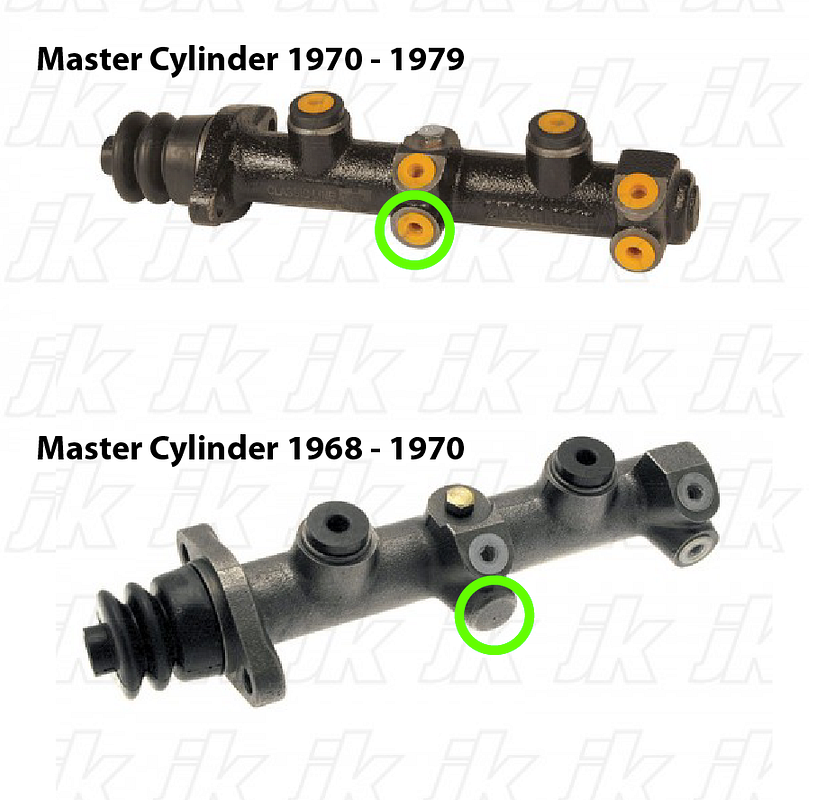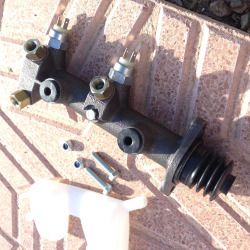cunning plan
Well-known member
- Joined
- Jul 15, 2008
- Messages
- 2,625
- Reaction score
- 1
- Location
- Northamptonshire
- Year of Your Van(s)
- 1968
- Van Type
- Clipper / Microbus
Here are two Master Cylinders from JK:
One for a 1968 to 1970 (http://www.justkampers.com/vw-t2-bay-window-parts/t2-bay-braking-system-parts/brake-master-cylinders-wheel-cylinders/211-611-021-t-brake-master-cylinder-vw-t2-1969-1970.html" onclick="window.open(this.href);return false .
.
The other for a 1970 to 1979 (http://www.justkampers.com/vw-t2-bay-window-parts/t2-bay-braking-system-parts/brake-master-cylinders-wheel-cylinders/211-611-021-ae-brake-master-cylinder-non-servo-vw-t2-bay-1970-1979.html" onclick="window.open(this.href);return false .
.
They look identical, minus the 4th port (circled in green) on the '68-'70 version. I presume on a 4 port version, you can run 4 individual brake lines to each wheel, instead of one each to the front wheels, then a joint one for the rears?

Question: Will the later 4 port version fit in an Earlybay (1968) as they look very similar?
Question, part 2: If it cannot be fitted for some reason, can I take the Master Cylinder to an engineer to be professionally tapped out in the blank section to accept a 4th brake line?
Thanks guys!.. :shadey:
One for a 1968 to 1970 (http://www.justkampers.com/vw-t2-bay-window-parts/t2-bay-braking-system-parts/brake-master-cylinders-wheel-cylinders/211-611-021-t-brake-master-cylinder-vw-t2-1969-1970.html" onclick="window.open(this.href);return false
The other for a 1970 to 1979 (http://www.justkampers.com/vw-t2-bay-window-parts/t2-bay-braking-system-parts/brake-master-cylinders-wheel-cylinders/211-611-021-ae-brake-master-cylinder-non-servo-vw-t2-bay-1970-1979.html" onclick="window.open(this.href);return false
They look identical, minus the 4th port (circled in green) on the '68-'70 version. I presume on a 4 port version, you can run 4 individual brake lines to each wheel, instead of one each to the front wheels, then a joint one for the rears?
Question: Will the later 4 port version fit in an Earlybay (1968) as they look very similar?
Question, part 2: If it cannot be fitted for some reason, can I take the Master Cylinder to an engineer to be professionally tapped out in the blank section to accept a 4th brake line?
Thanks guys!.. :shadey:



